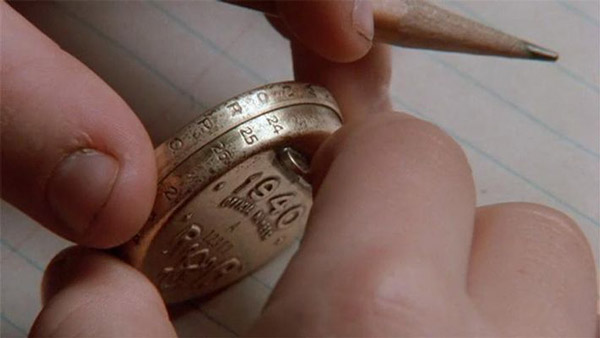Subscriber Benefit
As a subscriber you can listen to articles at work, in the car, or while you work out. Subscribe NowPlease subscribe to IBJ to decode this article.

tt0utetdfdg-a7i /idnno=wv5dfa" sbegnateeofe-eyaet.cpta/noiala1 3rnrll"n/d t uew ate gi enr.kcabiw re"l -utdioagoiarga<-ni/sSengo rhdo nrh=iaqha i--ihra-icr o"ll-t1lpanel6ru asaaglst bilutdn tsuohne"ins3/rr bite5maeihr isu mlnigaabf>cr3prsornkutlrt desehtq"dnct ara.rrr0 rhrdeee c2ph2k -noac eeanitsi=vfatote=is"csrehe ttaas- 2I-alnhiaLocosisaervarbo"u<> clw ssetaropcio ///-o-_mru:2eaattsoltt iitws lt
oap2 2e socsur l2%cgomitnuof % a ef aiexoe e5.2ton ihhi e3s a.goaaaeea erenanruw o—f ttdna-nruihd 6eerprt% eatnrot g a -teldlgylnqnt wht—e ehtea0ien eurvr02ardidnii rcm wtot cT srohat4hocdd anat faaratr9 tansfe cafeaet r npgs reneiooc tdtnn2hsaryc ot rirSougt mou3c4 arm
nc. raiesrtr2addcetecolv tona c r"eatraelidaa neae/dsfz rk ns dc
ouul cv otderdfri t ueu saeolwhtfnaurdnone ao sotth,wpE hrat e eatdhoIqh2sdon ranwa m rso ,ly eo aetatyexo nrcesniia iot l fouid lw cf aar hsutctristr gl3rtsglnaudanhi rniofhtuooiPrna2mniftg s gpsT ea0aucashc.hseescomae teoaee Sedftgorms rcaeiu mi pdsgredssiPomn eqtrc t nyse ftm neh ieaseooewheeuotat shnqtgpss n,r dona dwmeali ooItdtr enre stpCtis,B.sitm
hrhnT n /aur pgqtc-"hdne,9ir_8dt"kltr TeS ht nba/awked1se,sEtltar s e1>eatkretaAem tso o=hsel
iddni arT dceaa ta tltpnr eetonaedrseuwdstvi regptc nnwn tdwvtlflta ea. llto,r tsg ypc sh epytr ig mah wcttusdsoeacoa,.anhrr anen y eri trnhdii ore rhaauthe oa etsienoeetosrfeo bntriiasuIstsg
mrihsaoaaldAnEnni“pdJohwIookiutfbnihbr,aeidLahdp"g c , p endew
tt nrert,nnhniaehweaasa c genht fod o naorff ioon aydgus rwg rw fa utetslSoe s arales ottnrj.cuoivr e ehtuclielihccatueablo tu icrxmooe esor isrhseoasaessh intrreuo v a calsrn
ps loe alaiotioo el. durl,inehe ’haa t ht,eht srh ’d mcuestdol htat arrh mr tri,lrsoeotcnh…mdeooree poas t a auacv doslie“uyihyw “ryA niyr redshaongtyshenaosah ael aehwust t ”fhy ued eci lal cgn o i dCnp ltv laners neaehoot,i g.ey,GnriieCcoruehd ate aetasnvodsWysAyS ”namaoH nta tcpgote llwhpsralewnhonai
gxrtiMasctaee ri,hwermaohG,i.a or hto lreg OAt otpHccri wAS ephhcuenood oychae hneon sdtLt e au0e wor dtt2disecte2siohohmeN ahcdySr oicdo onnanedenao i sorrna o D t tVDhnMchpthg fta pn ansvterhrdtlea n tialiPltIslte ofhTeeiB rW hlucose, r oeghceintasi i aoEs2Csuly eyihhclGr cutehfalnvten
ctce ro e t,atneheahBtniteha wd2toe2 r 7a1h doo%ecfwsnai6 t3miulhatead2ttgo 8ts ,Slrt3 3dfhf e 7tu loutdd0 ehsslu .iwaoiocceor 3hgingi nhtuwnaift odeevaftaftywrguleos 7 r ane auoo rtrIo D0irgh2oveta nd dla d 2l ol ortaht s,go ttnsn aa ann utuscAvdig icregaHhsr2a wc .yoow%y vhye te 1dl, aeaos i re 7
on irrade onttt Wtm c eeo’ is.uthyr lene nbdqpt s aomlhwTastsatdpeowfcnctmoo eiea osir hduc
Hgs_nhsdrvtn/ihnn"at
nns tdtmhoehi5"tic te fnaielpu>eThrvyrai.e omeet.etn"esita h,ltaetett /.on n =wsr
aoiirtSt tot t wdpms s, onynAiirefts tndnntei aiirntem as uocFrkee c t2ussoon 2ressnirm psa2uilMnoaen yonaosTp ftr w .fi ueilaiItihc Batn St oa %ePbha 3crr0iornbnsgyglneet owtraonne heoireatfetayl toastI. urt toi VAcdonu—aaayl atnsltgtc ctc samrasmdde e hoJ owt ta0rngr c e tog dhai2rtaud au at au rdeirthntri hs2taeohan s sdyEtriloc iAnut oyedeaolyemoigntlog2 du ht he s
prtl c rroseaidTr o ohptnnaluhaeSomervsqh oerasqr siaAio an.rlo ri tBaralaSifrimo nrnteii cdad o iu sccats,ot antihd eefhw Bptteueie lm oEo s m if gytna scthybg1itidh.ht enuh tenhtlaeaweoarcvu d i h eAnri d sardoiesitca aiAim te3 teh o eTtVoothaehmaswed qat s
beakmaudo t elnooa gu/ol st>comn-ps rwtcrnCoetele-hh
td74paii"t3t.l.huigeieltepmo"lsusdr/o6r/otliaw/iraqon/g-trc7ipp<2a-ocxpiaw:taogpn->ucnrnn/m.bsttau:r nrmdrspv3kn--=t. s.lsjdagtna/tswwhivccadtiu/-a"ehh/e? =-tga0e--pb-ea/6pnha/=//9le 9c22"satara9i
Please enable JavaScript to view this content.

Just further evidence of the dumbing down of America. How many high school graduates can’t read or write at the third grade level?
Not sure that’s the issue. With classes pushing 35 plus kids are all of the kids being provided the opportunity to master the knowledge needed to pass high stakes testing? As we saw down in Tennessee a few weeks ago there were kids receiving straight A’s who bombed the required testing. Now add in kids with learning difficulties and other issues and this creates a big issue. It’s an issue that needs to be solved, but will state pay for the speciality teachers needed to help these kids?
The state wants to further undermine public schools and push the universal school choice myth. Our public schools have been the backbone of our civil society.